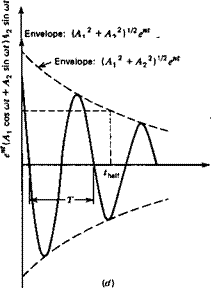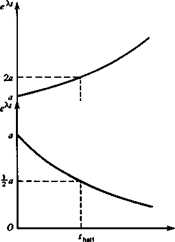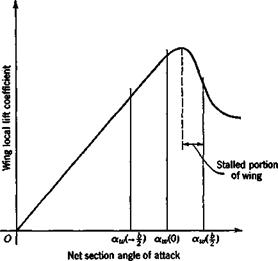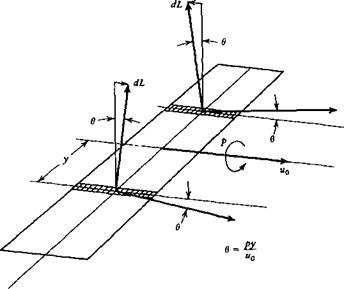COMPUTATION OF EIGENVALUES AND EIGENVECTORS
As noted above, the eigenvalues and eigenvectors are properties of the matrix A. A number of software packages such as MATLAB are now available for calculating them. For all the numerical examples in this book we have used the Student Version of Program CC.1 Appendix A.5 shows how we used it to get the results.
ROUTH’S CRITERIA FOR STABILITY
The stability of the airplane is governed, as we have seen, by the real parts of the eigenvalues, the roots of the characteristic equation. Now it is not necessary actually to solve the characteristic equation (6.1,6) for these roots in order to discover whether there are any unstable ones. E. J. Routh (1905) has derived a criterion that can be applied to the coefficients of the equation to get the desired result. The criterion is that a certain set of test functions shall all be positive (Etkin, 1972). We present below the result for the important case of the quartic equation, which will turn up later in this chapter.
Let the quartic equation be
AA4 + BA3 + CA2 + DA + £ = 0 (A>0) (6.1,13)
Then the test functions are F0 = A, F] = B, F2 = BC — AD, F3 = F2D — B2E, F4 =
Available from Systems Technology Inc. Hawthorne, CA.
F3BE. The necessary and sufficient conditions for these test functions to be positive are
A, B, D, E > 0
and
R = D(BC – AD) – B2E > 0 (6.1,14)
It follows that C also must be positive. The quantity on the left-hand side of (6.1,14) is commonly known as Routh’s discriminant.
Duncan (1952) has shown that the vanishing of E and of R represent significant critical cases. If the airplane is stable, and some design parameter is then varied in such a way as to lead to instability, then the following conditions hold:
1. If only E changes from + to —, then one real root changes from negative to positive; that is, one divergence appears in the solution (see Fig. 6.1a).
2. If only R changes from + to —, then the real part of one complex pair of roots changes from negative to positive; that is, one divergent oscillation appears in the solution (see Fig. 6.1c).
Thus the conditions E = 0 and R = 0 define boundaries between stability and instability. The former is the boundary between stability and static instability, and the latter is the boundary between stability and a divergent oscillation. These stability boundaries are very useful for certain analytical purposes. We shall in particular make use of the E = 0 boundary.




















